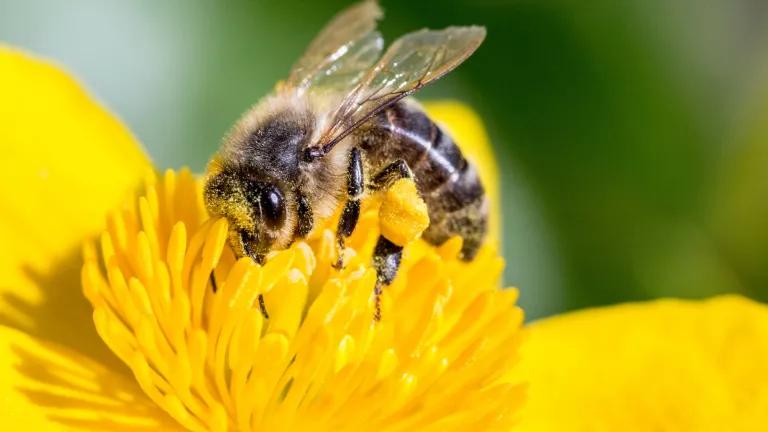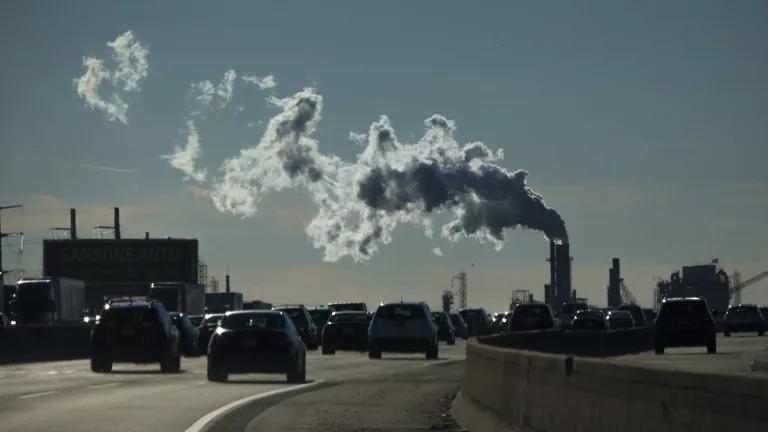Florence Increases Manure Lagoon & Coal Ash Threat

As the residents of frontline communities in North Carolina and others in the southeastern U.S. brace for the impact of Hurricane Florence, our thoughts are with the people in the storm’s path whose health and safety is at risk from a number of storm-induced threats—including potentially record-setting winds and rain.
State and federal leaders must do everything in their power to keep them safe when the storm strikes, as well as help them recover from the impacts that last well after the rain stops. We stand with local communities in harm’s way.
The storm also threatens to compound risks that frontline communities in North Carolina face every day from two environmental threats: industrial animal production facilities, also known as Concentrated Animal Feeding Operations (CAFOs), or factory farms, and coal ash disposal sites. In North Carolina, both coal ash and CAFOs are more likely to be sited near communities of color.
Concentrated Animal Feeding Operations
North Carolina produces 9 million hogs a year, more than any state except Iowa. It is also a leading poultry state, producing more than 800 million birds annually. The state's hogs and poultry are clustered in large facilities in the eastern area of the state, many on or near floodplains. This region contains the counties with the greatest density of hogs in the nation. Pigs outnumber people 30-to-1 here, and each hog produces more than 3-times the waste of an adult human. Unlike with human waste, there is no requirement that anyone treat factory farm manure. Instead, waste is pumped into open football-field-sized cesspools and sprayed, untreated, into the air and onto land. Dead animals are also stored on site in so-called compost facilities or dead boxes.
CAFOs contaminate air, surface waters and drinking water with many dangerous pollutants and they are hotbeds of drug-resistant bacteria (or “superbugs”). Neighbors suffer disproportionately from antibiotic-resistant infections under normal circumstances. These conditions are the consequence of large animal production facilities routinely overusing antibiotics important to human medicine on animals that are not sick, as well as using outdated manure management practices, locating facilities in floodplains, and failing to implement adequate health protections for communities, especially those who are most vulnerable.
So what happens when a massive hurricane dumps dozens of inches of rain here? If past hurricanes are any example, the answer is: nothing good.
Hurricane Floyd in 1999, which was similar in scope to Florence, caused severe flooding, killed many tens of thousands of hogs (some estimate that storm claimed 100,000), compromised more than 50 manure lagoons, and exposed communities to bacteria from fecal matter in the waste from flood waters. Even after the flood waters receded, the microbial threat persisted.
More recently, two years ago in 2016 Hurricane Matthew hit eastern North Carolina and caused damage visible from outer space. According to the Waterkeeper Alliance, “the flood [after Matthew] partially submerged 10 industrial pig farms with 39 barns, 26 large chicken-raising operations with 102 barns, and 14 open-air pits holding millions of gallons of liquid hog manure.” North Carolina estimated that in Hurricane Matthew 1.8 million chickens and 4,800 hogs died.
These are not just devastating losses, but an ongoing major health threat to neighbors in environmental justice communities. When industrial animal facilities flood, manure, decomposing dead animals and drug-resistant bacteria flow into flood waters and endanger surrounding communities, as well as the environment. Florence is expected to dump as much as two times the rain as Matthew, and the consequences could be dire. To make matters worse, without adequate communication from the state, residents—especially those in poor communities of color—are left wondering whether their water and soils are safe long after the rains stop.
Toxic Coal Ash
Compounding the threat North Carolinians face from hog waste, dozens of toxic coal ash storage facilities are also located with the area forecasted to be affected by Florence.

Coal ash is the solid waste left over when coal is burned for electricity. It’s a deadly brew of carcinogens, neurotoxins, and poisons, including lead, arsenic, radium, and hexavalent chromium. Exposure to coal ash can cause nervous system damage, developmental issues in children, an increased risk of cancer, and other serious health impacts. Coal ash can also harm wildlife, potentially killing large populations of sensitive species.
Yet, many coal ash storage facilities have no liners or other safeguards to prevent groundwater contamination, and many are unstable and prone to failure or collapse. Because power plants need large quantities of water to operate, coal waste pits are located alongside lakes, rivers, and other waterways. Troublingly, civil rights experts have found that these sites are more likely to be located in poor communities of color. In 2015, the Obama administration adopted a regulation that would tighten safety standards for coal ash facilities, but this summer the Trump EPA rolled back key parts of those rules.
There are more than 30 coal ash disposal facilities at 14 power plant sites in North Carolina. Some of these coal ash facilities have spilled or been inundated during past storms, including Hurricane Matthew two years ago. Moreover, the state is still recovering from the thousands of tons of coal ash that spilled into the Dan River in 2014 due to a ruptured pipe at a Duke Energy facility. It caused hundreds of millions of dollars in damage and was the third-largest coal ash spill in United States history. The people and wildlife in the path of Hurricane Florence face a similar risk of harm, thanks in part to decades of insufficient regulation and oversight of these dangerous facilities.
Right now, our nation’s first priority must be protecting the people, homes, and businesses in immediate danger. In the difficult path to recovery that will follow, we’ll also need our leaders to help communities on the ground recover and rebuild in healthy, sustainable, and equitable ways. We owe it to the people of eastern North Carolina to take action to reduce the health threats spotlighted by this storm, to ensure future generations no longer have to fear a deluge of harmful bacteria and chemicals when the next storm hits.
This blog provides general information, not legal advice. If you need legal help, please consult a lawyer in your state.




